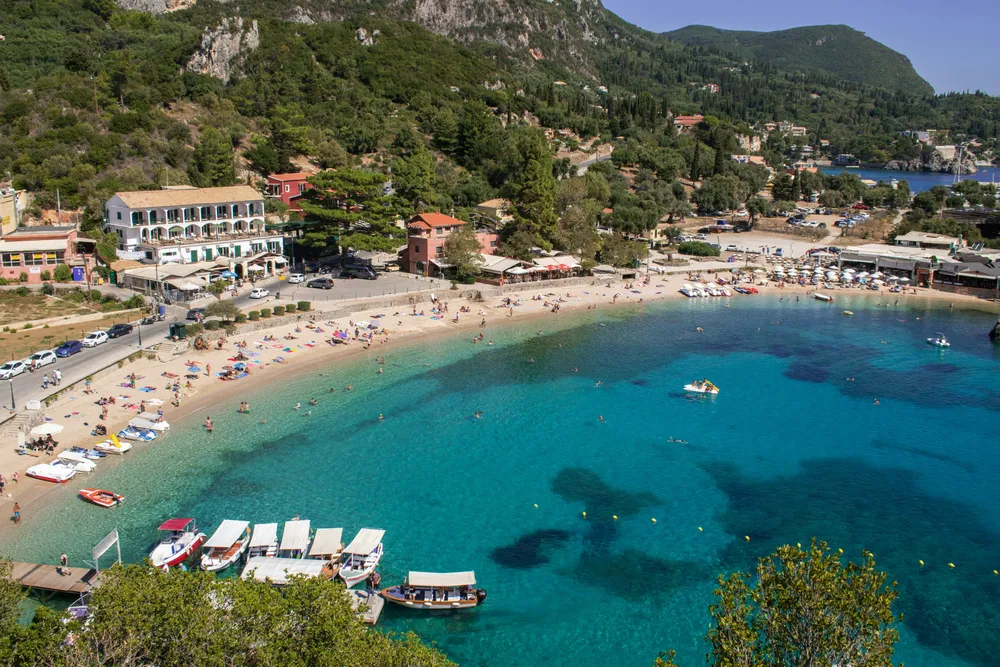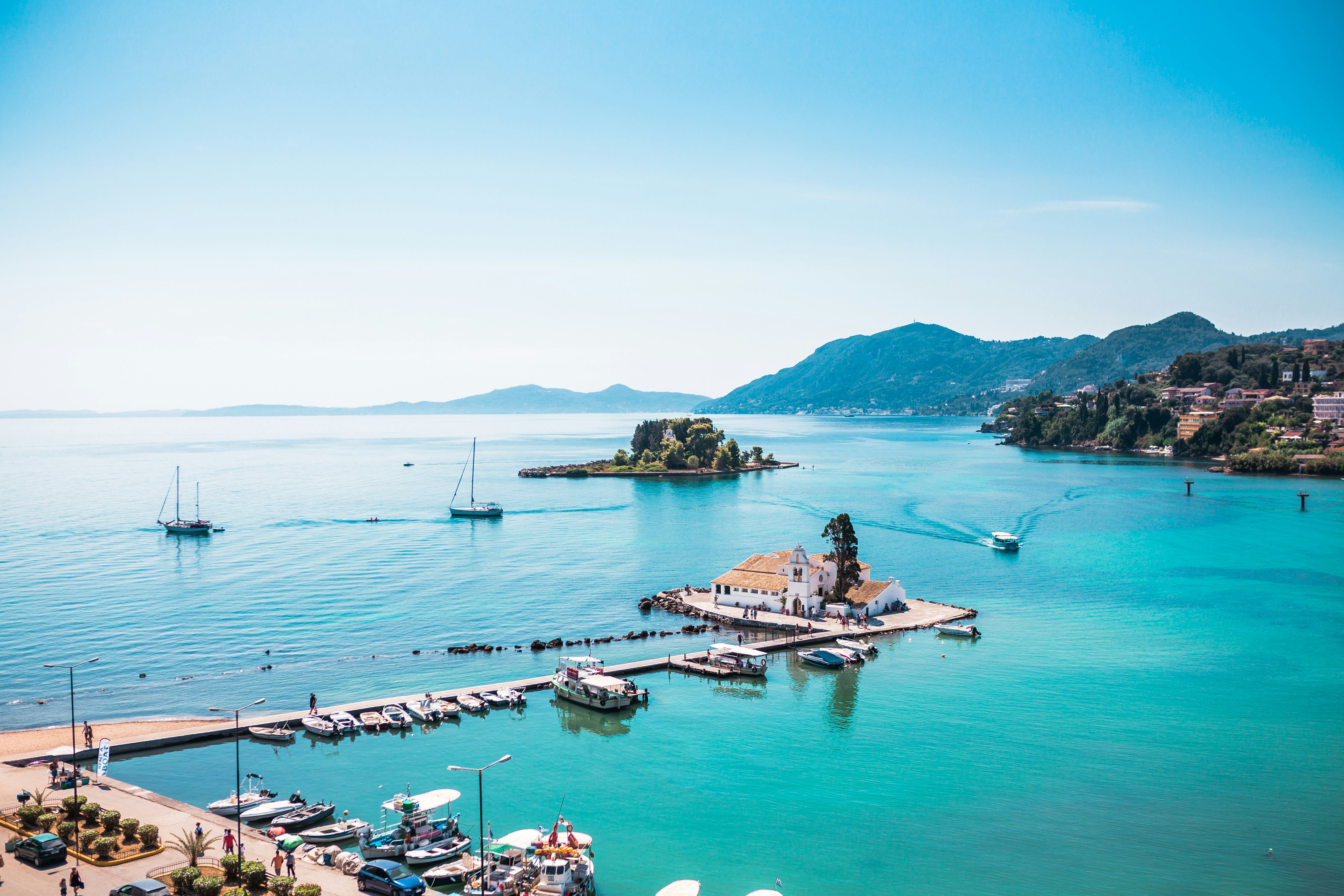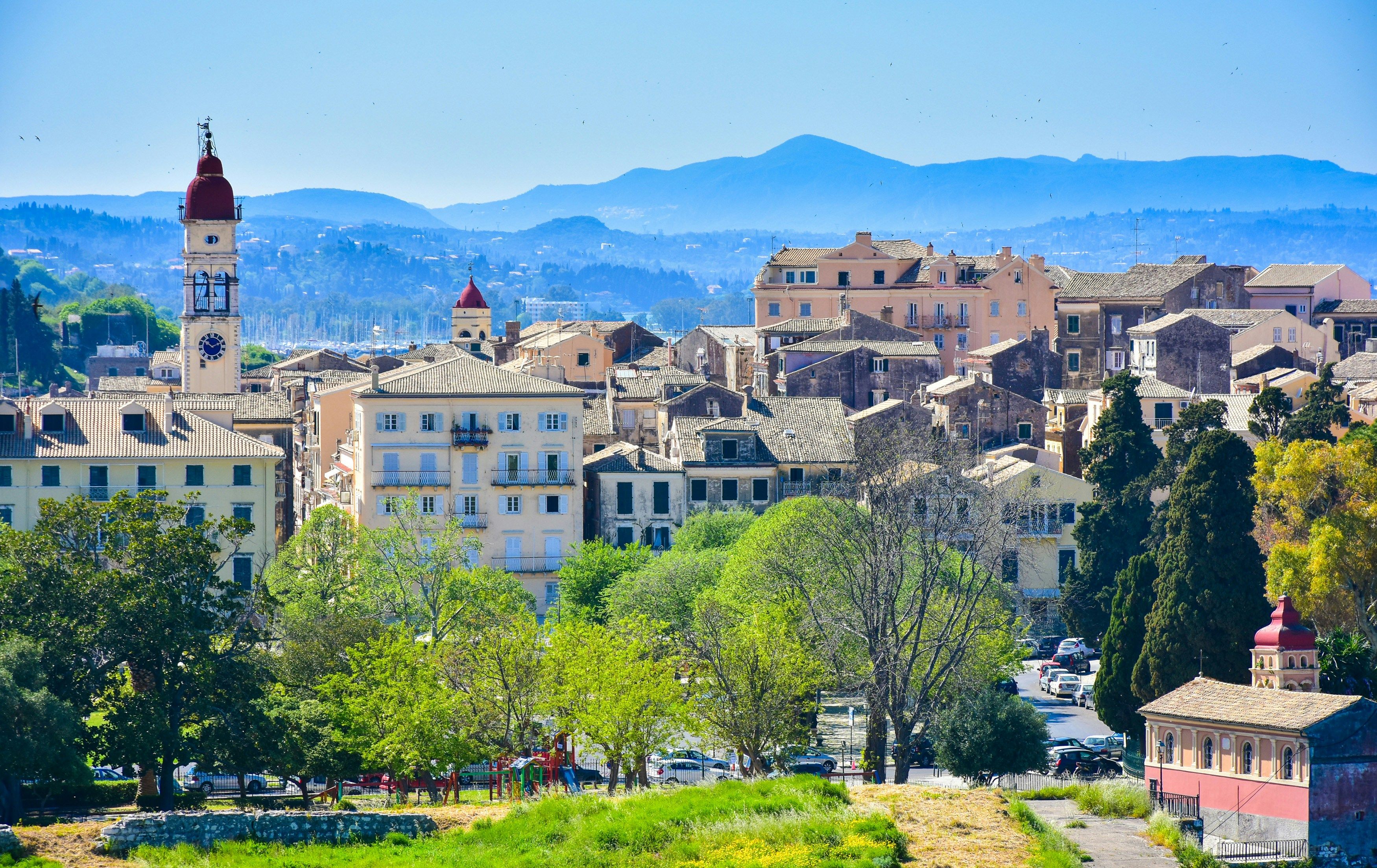Travelling from Bari to Corfu: Complete Ferry & Travel Guide
Travel Guides
Travel Guides


Embarking on a journey from Bari to Corfu offers travellers a wonderful opportunity to experience the beauty of crossing the Adriatic Sea to reach one of Greece's most charming islands. This popular route spans approximately 232 miles (373.5 km) and connects the Italian port city with the stunning Greek island. While flights might be an option for some travellers, the ferry route provides a scenic and relaxing alternative that allows you to bring vehicles and enjoy the journey as part of your holiday experience. This comprehensive guide covers everything you need to know about travelling from Bari to Corfu, with a focus on the ferry services that connect these two magnificent destinations.
When planning your journey from Bari to Corfu, you have transportation options to consider, though ferries remain the most direct and practical choice for most travellers.
The ferry route between Bari and Corfu spans 201.7 nautical miles across the Adriatic Sea. Ferries typically take around 9 hours and 23 minutes to complete the journey, with the shortest crossing time being approximately 8 hours with Blue Star Ferries. This maritime route operates seasonally, with approximately 1 sailing per day, 4 weekly connections, and about 15 monthly sailings during the operating season.
While flying might seem faster on paper, when you factor in airport transfers, check-in times, and baggage collection, the time difference isn't as significant as it might initially appear. Additionally, the ferry offers unique advantages: you can bring your vehicle, enjoy more space to move around during the journey, take in spectacular sea views, and arrive directly into Corfu port, which is conveniently located near the main town.
The ferry experience also adds a sense of adventure to your journey, allowing you to enjoy onboard amenities while watching the Italian coastline fade into the horizon before the Greek islands come into view. For many travellers, this maritime journey becomes a memorable part of their Mediterranean experience rather than just a means of transportation.
You can take a ferry from Bari to Corfu. Ferries sail in around 9 hours and 23 minutes with about 1 sailing a day. The fastest ferry sails in around 8 hours and is provided by Blue Star Ferries. Departures start as early as 12:00, with the last departure from Bari to Corfu at 23:59.
Blue Star Ferries is the primary operator serving the Bari to Corfu route. As part of the Attica Group, one of the largest maritime transport providers in the Eastern Mediterranean, Blue Star Ferries offers reliable service with modern vessels equipped to ensure a comfortable journey across the Adriatic.
The ferries serving this route typically offer a range of amenities to make your journey comfortable. These usually include:
For overnight journeys, we recommend booking a cabin to ensure you arrive in Corfu well-rested and ready to begin your holiday adventures.
It's important to note that the Bari-Corfu ferry route is seasonal, with more frequent sailings during the summer months (typically May through October). During peak season (July and August), we recommend booking your ferry tickets well in advance as this popular route can sell out, especially for vehicles or cabin accommodations.
The shoulder seasons of late spring and early autumn offer a great balance of good weather, available space on ferries, and fewer crowds both on board and at your destination.

Bari port is located close to the city centre, making it easily accessible for travellers. The main ferry terminal for international routes is situated at the Porto di Bari, which handles ferries to Greece, Albania, and other destinations.
To reach the port:
The terminal facilities at Bari port include:
We recommend arriving at least 2 hours before your scheduled departure time to allow for check-in and boarding procedures, especially if you're travelling with a vehicle.
Corfu's main ferry port is located in Corfu Town (Kerkyra), the island's capital. The port has two main sections: the New Port, which handles most ferry arrivals from Italy and mainland Greece, and the Old Port, primarily used for local ferries.
Upon arrival, you'll find:
To reach Corfu Town centre from the port:
If you're heading directly to other parts of the island, car rentals are available at the port, or you can use the island's bus service, which connects Corfu Town to most major villages and beaches.
While a day trip from Bari to Corfu is technically possible, it's not practical or recommended due to the ferry schedule and crossing duration. With the average journey taking around 9 hours and 23 minutes each way, and considering that departures from Bari typically start at 12:00, you would arrive in Corfu in the evening, leaving little to no time for exploration before needing to return.
For those determined to maximise a short visit, we recommend at least an overnight stay in Corfu. This would allow you to:
A more enjoyable approach would be spending at least 2-3 nights on Corfu to properly experience what this beautiful island has to offer. This gives you time to visit the main attractions, enjoy the beaches, and perhaps explore some of the interior villages without feeling rushed.
If your schedule only allows for a very brief visit, consider focusing solely on Corfu Town, which offers a concentrated dose of the island's history, culture, and beauty within a walkable area.
1. Old Town of Corfu (Kerkyra)
A UNESCO World Heritage site, Corfu's Old Town reflects centuries of Venetian, French, and British influence. Wander through narrow streets, admire the impressive fortresses, and enjoy the elegant architecture. The area is particularly magical in the early morning or evening when the crowds thin and the light is perfect for photography. Open all day, every day for street exploration.
2. Achilleion Palace
Built for Empress Elisabeth of Austria in 1890, this neoclassical palace features beautiful gardens adorned with statues of Greek mythology. The interior showcases impressive paintings and personal items of the empress. Open daily from 8:00 to 19:00 during summer months, with shorter hours in winter.
3. Paleokastritsa
Perhaps Corfu's most famous beach area, Paleokastritsa offers stunning blue waters, dramatic cliffs, and several small, scenic coves. Visit the 13th-century monastery perched on the headland for spectacular views. The monastery is open daily from 7:00 to sunset.
4. Corfu Old Fortress
Standing on a rocky peninsula with panoramic views, this imposing Venetian fortress is separated from the town by a moat. Explore the battlements, enjoy the museum, and take in the sweeping vistas of the town and sea. Open daily from 8:00 to 20:00 in summer, with reduced hours in winter.
5. Canal d'Amour
Located near Sidari, these unique sandstone formations create a series of coves and canals. According to local legend, couples who swim through the canal will stay in love forever. This natural attraction is accessible year-round, though swimming is best during the warmer months from May to October.

Corfu Town (Kerkyra) - The island's capital combines Venetian elegance with Greek charm. The area between the Old Fortress and New Fortress contains most of the historical sites, museums, and upscale shopping opportunities.
Kanoni - Just south of Corfu Town, this upscale residential area offers the famous view of Mouse Island (Pontikonisi) and the monastery of Vlacherna, one of the most photographed spots in Corfu.
Paleokastritsa - Beyond its beaches, this village area on the west coast has developed into a popular resort while maintaining much of its traditional character, with excellent seafood tavernas and beautiful surroundings.
Kassiopi - A former fishing village turned resort on the northeast coast, offering a nice balance of traditional Greek atmosphere, beaches, and nightlife options ranging from relaxed bars to more energetic clubs.
Sidari - Located on the northern coast, this lively resort area is known for its unique coastal formations, sandy beaches, and vibrant nightlife with numerous bars and restaurants catering to tourists.
Corfu enjoys a Mediterranean climate characterised by mild, rainy winters and hot, sunny summers. The island is notably greener than many other Greek islands due to higher rainfall, which contributes to its lush landscape.
Summer (June to September): The peak tourist season brings average temperatures between 25°C and 32°C (77°F to 90°F). July and August are the hottest months, with minimal rainfall and maximum sunshine. Sea temperatures reach a pleasant 25°C (77°F), perfect for swimming and water activities.
Spring and Autumn (April-May and October-November): These shoulder seasons offer delightful weather with temperatures typically ranging from 15°C to 25°C (59°F to 77°F). Spring brings wildflowers and lush greenery, while autumn offers warm sea temperatures lingering from summer. These periods are ideal for hiking and exploring the island without the intense summer heat.
Winter (December to March): Winters are mild compared to northern Europe, with temperatures usually between 5°C and 15°C (41°F to 59°F). This is the rainy season, with December and January seeing the most precipitation. While not beach weather, winter offers a peaceful atmosphere and the opportunity to experience authentic local life.
Regarding ferry operations, weather can occasionally impact crossings during the winter months when strong winds or storms may cause delays or cancellations. Summer generally offers the most reliable sailing conditions, though the occasional strong wind can affect schedules year-round. We recommend checking weather forecasts before your journey and signing up for alerts from your ferry operator.
Corfu offers options for various budget levels, though prices tend to be higher during the peak summer season (July-August).
Budget travellers can manage on approximately £50-70 per day, staying in hostels or budget rooms, eating at local tavernas or preparing simple meals, and using public transportation. Many beaches are free to access, providing cost-effective entertainment.
Mid-range travellers should budget around £100-150 daily for comfortable accommodations, restaurant meals, some activities, and occasional taxi use.
Luxury travellers can expect to spend £200+ per day for high-end resorts, fine dining, private tours, and car rentals.
Some typical costs include:
Money-saving tips include visiting during shoulder seasons (May-June or September-October), staying in accommodations with kitchen facilities, eating where the locals eat rather than in tourist hotspots, and purchasing a multi-site museum pass if you plan to visit several attractions.
The ideal time to visit Corfu depends on your preferences regarding weather, crowds, and activities.
Peak Season (July-August): This is when Corfu experiences its hottest weather, with temperatures regularly exceeding 30°C (86°F). The island is at its most vibrant, with all attractions, restaurants, and nightlife venues operating at full capacity. However, this is also when crowds are at their maximum and prices at their highest. The beaches can be crowded, and you'll need to book accommodations well in advance.
Shoulder Season (May-June and September-October): Many consider these months the perfect time to visit Corfu. The weather remains pleasantly warm, with temperatures typically between 20°C and 28°C (68°F to 82°F), ideal for combining beach time with sightseeing. The sea is warm enough for swimming, especially in June and September. You'll encounter fewer crowds, more reasonable prices, and a more relaxed atmosphere while still finding most attractions and facilities open.
Off-Season (November-April): Winter in Corfu offers a completely different experience. While not suitable for beach holidays, this period allows you to experience authentic local life and enjoy the lush, green landscape nourished by winter rains. Many tourist facilities close, but you'll find lower prices and a peaceful atmosphere. The Easter celebration in Corfu is particularly special, featuring unique local traditions and ceremonies.
Notable events include the Corfu Easter celebrations (date varies), the Varkarola Festival in August (commemorating the island's patron saint with music and a spectacular boat parade), and the Cricket Festival in spring and autumn, reflecting the island's British heritage.
We recommend late May to early June or September for the best combination of good weather, reasonable prices, and manageable crowds. These periods are ideal for both beach enjoyment and cultural exploration.
Finding the perfect place to stay in Corfu is easy with options available for every budget and travel style. The island offers a diverse range of accommodation choices that cater to all preferences.
Hostels and guesthouses in Corfu Town provide affordable options starting from around £20-£30 per night. These are often centrally located, making them perfect for exploring the UNESCO World Heritage old town on foot.
Boutique hotels in picturesque locations like Paleokastritsa or Kassiopi offer romantic settings with stunning sea views. Mid-range options typically cost £50-£100 per night, with luxury choices available for those seeking something special.
Family-friendly resorts are abundant along the east coast beaches, offering all-inclusive packages and amenities for children. Self-catering apartments and villas are also popular, providing more space and flexibility for family groups, with prices ranging from £70-£200 depending on size and location.
We recommend booking accommodation well in advance if travelling during the peak summer months (June-August) when the island sees the highest number of visitors.

Once you arrive in Corfu, you'll find several convenient transportation options to explore this beautiful Greek island.
The local bus network (KTEL Corfu) is affordable and connects most major towns and beaches. Buses run regularly from Corfu Town to popular destinations across the island, with tickets costing between £1.50-£3.50 depending on distance.
Car rental is widely available from agencies at the port and throughout Corfu Town, starting from approximately £25 per day. For shorter distances, scooter and quad bike rentals offer a fun alternative from about £15 daily.
Taxis operate throughout the island with fixed rates between major destinations. A typical journey from Corfu Town to Paleokastritsa costs around £30-£35.
For those who enjoy active travel, many coastal areas and Corfu Town itself are perfect for exploring on foot, with well-maintained walking paths connecting nearby beaches and attractions.
Travelling to Corfu by ferry offers an authentic Mediterranean experience that combines convenience with the romance of sea travel. The journey provides a comfortable and scenic passage across the Ionian Sea.
With regular sailings and increased frequency during summer months, ferry routes make this Greek island paradise easily accessible. Whether you're seeking historical exploration in Corfu Town, relaxation on golden beaches, or adventure in the lush interior, a ferry journey is the perfect start to your Ionian adventure.
Remember that advance booking is recommended, especially during the peak season. Check availability now and secure your spot to experience the perfect blend of Mediterranean culture on your next holiday.